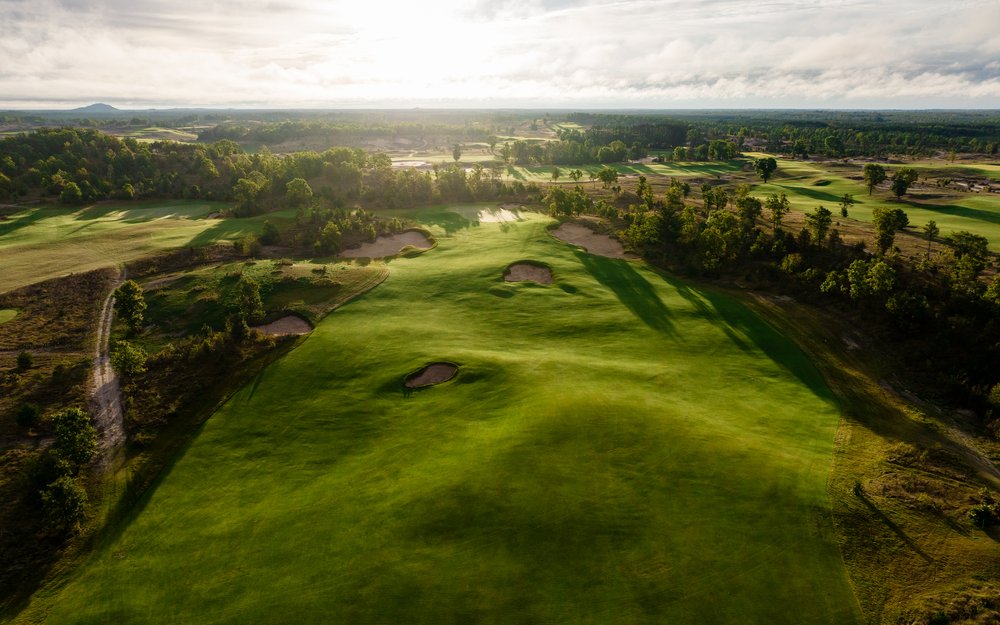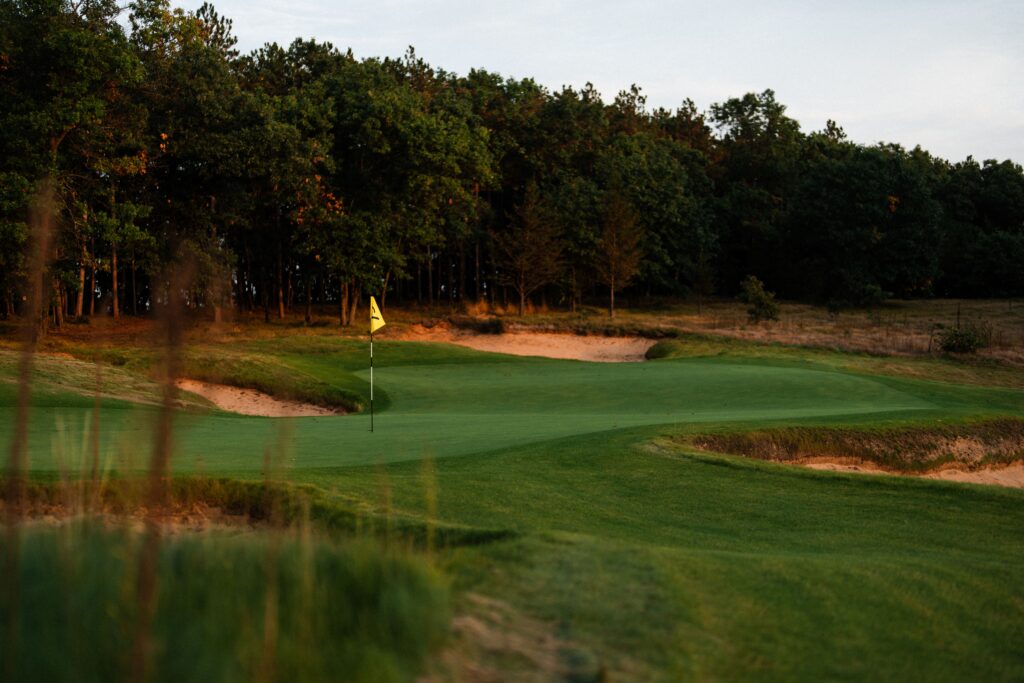
Sedge Valley
When it comes to popular golf resorts, it would be easy (and maybe safer) to stick to a tried-and-true formula. Sand Valley Golf Resort took a different approach with its newest course, Sedge Valley.
In contrast to the wide playing corridors at Sand Valley and Mammoth Dunes – the other two public-access courses at the Central Wisconsin destination — architect Tom Doak created a far more intimate routing at Sedge Valley that was inspired by the heathland courses of London and the English coast.
Most uniquely, however, it is a par-68.
Consider that only about 2% of the 18-hole regulation-length courses in the U.S. have a par under 70.
Doak said he was aiming for more “finesse” at Sedge Valley, building classically styled holes that require “some compromises from the long and wild hitter.” It also required buy-in from Chris and Michael Keiser Jr., the co-owners of the resort and sons of Bandon Dunes founder Mike Keiser.
“The overall design does allow us to focus more on the green sites themselves,” said Doak. “I don’t have to worry as much about a severe slope at the edge of the green being ‘unfair’ if you’re hitting a relatively short approach into it. You look for great green sites. We found them here, and it’s a credit to Michael and Chris that they allowed us to build around those great sites.”
Sedge Valley engages golfers’ imagination and decision-making, says Michael Keiser, the older of the Keiser siblings. It also challenges traditional assumptions; most notably what par should be.
The original Sand Valley course built by Bill Coore and Ben Crenshaw is a traditional par-72. Mammoth Dunes, designed by David McLay Kidd, is a par-73.
There’s no question that a par-72 is the standard when it comes to U.S. courses, though par-71 courses are also fairly commonplace. Par-70s (and par-73s, for that matter) are less common, but not unusual. Dipping into the 60’s for a course that’s not an executive-length course, though, is rare.
Definitely not ‘par for the course,’ as the old saying goes.

Sedge Valley
At Sedge Valley, golfers will encounter the timeless strategies and elements of courses that Doak believes have best withstood endless advances in the game. As inspiration, he points to U.K. courses such as Swinley Forest, Rye, West Sussex, The Addington, St. Georges Hill, and Sunningdale that haven’t expanded much beyond their original scope, yet remain relevant, interesting and challenging.
“These are designs that have remained essentially unchanged over time,” Doak says. “I can’t think of a higher standard.”
Sedge Valley is less than 6,000 yards from the back tees, with 12 par-4 holes, five par-3s and one par-5.
But shorter doesn’t mean easier. Doak is a proponent of “half-par” holes and delivers at Sedge Valley with holes like the 455-yard, par-4 third, or the 294-yard par-4 sixth. The latter tempts long hitters at their peril, with a devilish green squeezed atop a skinny shelf.
“When you don’t have to think about stretching a course to 7,300 yards, you can start thinking about finding cool green sites, without worrying about how close together they are,” Doak said, adding that the risk-reward sixth hole is “the kind of hole that actually gets long-hitters into trouble because they feel compelled to attack even when it’s not wise.”
Sedge Valley might be considered an outside-the-box approach, but it delivers the strategic element that Doak was going for. Beyond length, Sedge integrates many characteristics of the great old Heathland courses of the U.K., among them native groundcover, open sandy expanses, good terrain and intriguing greens sites. As Doak notes, these are the golf course fundamentals that stand the test of time.

